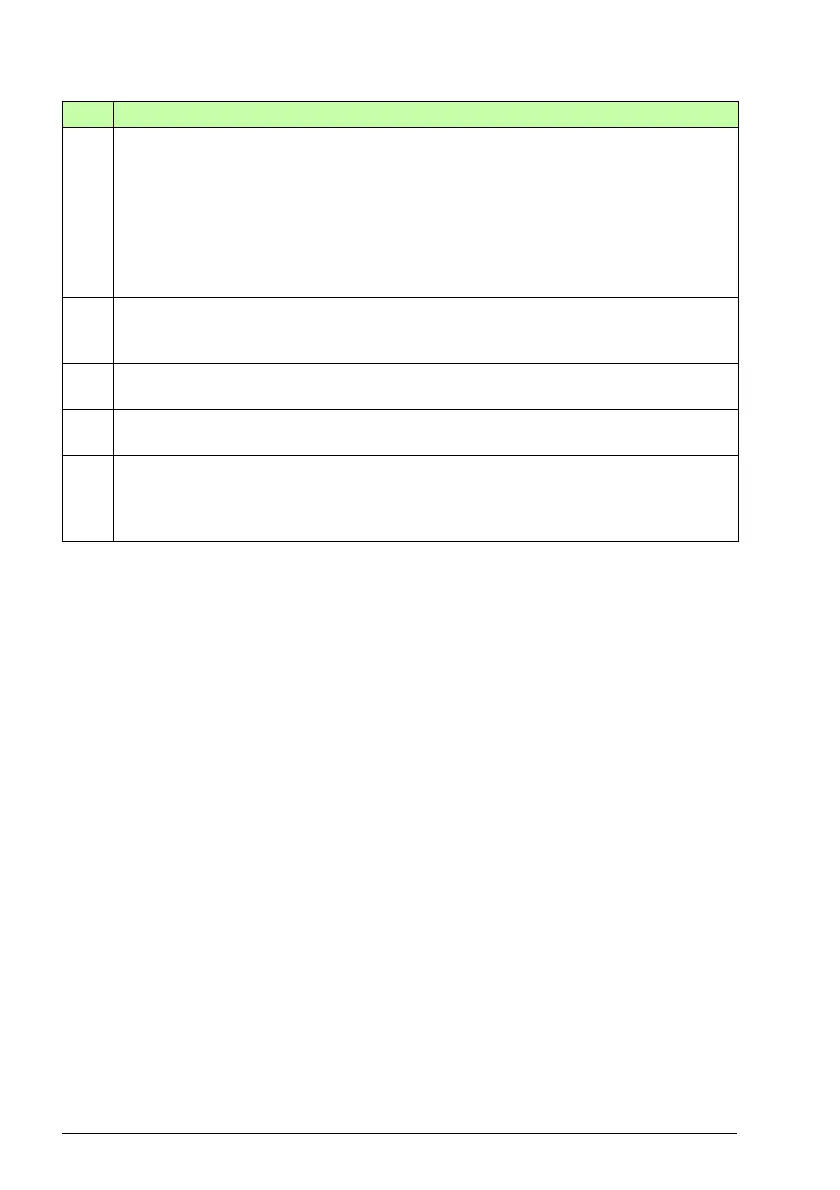150 Safety functions
Step Description
1 The SLS request is received. The motor speed is above the SLS trip limit positive (A).
The drive starts to ramp down the motor speed. The SAR1 parameter 200.112 defines
the deceleration ramp slope until the speed reaches the SLS limit. The FSO starts the
SAR1 ramp monitoring (parameters SARx.21, SARx.22). SAR1 configuration defines
the target and monitoring limits for the deceleration ramp (SARx.22, 200.112,
SARx.02).
Note: If parameter 200.112 has value 0, the drive (drive parameter 23.23) defines the
ramp.
2 The drive trips on a fault, there is a drive power loss, or user stops the drive by coast
stop. SAR1 monitoring of the FSO is switched off. SLS Modoff delay time starts
(parameters SLSx.05 & SLSx.06). STO.14 delay starts.
3 Modulation of the drive returns. FSO activates SAR1 monitoring again with same
ramps as when the SLS request was set.
4 The Modoff delay time limit. If the modulation would not return before this time, see
previous case.
5 The FSO starts the SLS monitoring when the motor speed is in the middle of the SLS
limit and the SLS trip limit (see also section How to configure mute time for monitoring
start on page 399), and stops the SAR1 monitoring. The SLS indication (parameter
SLSx.15, SLSx.24, SLSx.34 or SLSx.44) goes on.
